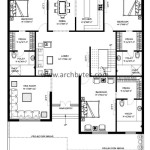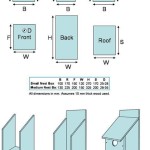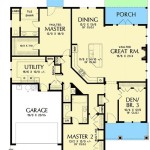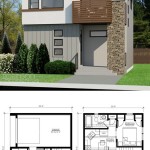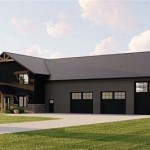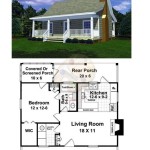```html
House Plans with Porch Across Front: A Comprehensive Guide
The allure of a house plan featuring a porch across the front is timeless and enduring. Beyond its aesthetic appeal, a front porch offers functional benefits, creating a transitional space between the interior and exterior, fostering community interaction, and enhancing the overall curb appeal of a home. This article will delve into the various aspects of house plans with a porch across the front, exploring design considerations, benefits, and practical examples.
Understanding the Appeal of a Front Porch
The popularity of front porches stems from a deep-seated connection to traditional architectural styles and a desire for a more relaxed and connected lifestyle. Historically, front porches served as gathering places for families and neighbors, facilitating social interaction and creating a sense of community. In modern times, the front porch retains this social function, offering a space to relax, enjoy the outdoors, and connect with the neighborhood. Furthermore, a well-designed front porch adds architectural interest and visual appeal to a home, increasing its market value and creating a welcoming first impression.
Beyond the social and aesthetic benefits, front porches also provide practical advantages. They offer protection from the elements, shielding the front door from rain, snow, and direct sunlight. This can help to prolong the lifespan of the door and reduce energy costs by minimizing heat gain in the summer. A front porch also creates a buffer zone between the interior and exterior, reducing the amount of dirt and debris that enters the home. In essence, a front porch serves as a functional and aesthetically pleasing addition to any house plan.
Key Design Considerations for Front Porches
Designing a front porch involves careful consideration of several factors to ensure that it complements the overall architecture of the house, meets the needs of the homeowners, and adheres to local building codes. These considerations include porch size and layout, roofing options, materials, and accessibility.
Porch Size and Layout: The size of the front porch should be proportionate to the size of the house. A sprawling mansion would benefit from a larger porch, while a smaller cottage might only require a more modest space. The layout of the porch should also be carefully considered. Factors such as furniture placement, traffic flow, and accessibility should be taken into account. A wider porch allows for more furniture and provides ample space for people to move around comfortably. The placement of steps and railings should also be carefully planned to ensure safety and accessibility for people of all abilities.
Roofing Options: The roof of the front porch is a critical element that contributes to its overall aesthetic and functionality. Common roofing options include gable roofs, hip roofs, and shed roofs. Gable roofs are a popular choice for their simple design and affordability. Hip roofs offer a more sophisticated look and provide better protection from the elements. Shed roofs are often used for smaller porches and can be a cost-effective option. The roofing material should also be chosen to complement the rest of the house. Common materials include asphalt shingles, metal roofing, and tile roofing. The pitch of the roof should also be carefully considered to ensure proper drainage and prevent water damage.
Materials: The materials used to build the front porch will affect its appearance, durability, and maintenance requirements. Common materials include wood, composite decking, concrete, and stone. Wood is a classic choice for its natural beauty and warmth. However, it requires regular maintenance to prevent rot and decay. Composite decking is a low-maintenance alternative to wood that offers good durability and weather resistance. Concrete is a strong and durable material that can be used for the porch foundation and flooring. Stone can be used to add a touch of elegance and sophistication to the front porch. The choice of materials will depend on the budget, aesthetic preferences, and maintenance requirements of the homeowner.
Accessibility: Accessibility is an important consideration for any front porch design. The porch should be easily accessible for people of all ages and abilities. This may involve incorporating ramps, wider doorways, and level surfaces. Handrails should be provided along steps and ramps to provide added safety. The Americans with Disabilities Act (ADA) provides guidelines for accessible design, which can be helpful when planning the porch layout.
Exploring Different Architectural Styles
House plans with a porch across the front can be adapted to a wide range of architectural styles, each with its unique characteristics and design elements. Common architectural styles that incorporate front porches include Craftsman, Farmhouse, Colonial, and Victorian.
Craftsman: Craftsman-style homes are known for their simplicity, natural materials, and handcrafted details. Front porches on Craftsman homes are typically wide and inviting, featuring exposed rafters, tapered columns, and natural stone accents. The use of wood is prevalent, with stained wood siding and trim adding warmth and character to the exterior. The emphasis is on creating a comfortable and welcoming space that blends seamlessly with the surrounding landscape.
Farmhouse: Farmhouse-style homes evoke a sense of nostalgia and rural charm. Front porches on Farmhouse homes are often large and wrap-around, providing ample space for relaxing and entertaining. Common features include rocking chairs, porch swings, and shiplap siding. The use of rustic materials, such as reclaimed wood and corrugated metal, adds to the overall character of the home. Farmhouse porches are designed to be functional and inviting spaces that reflect the simple pleasures of country living.
Colonial: Colonial-style homes are characterized by their symmetrical facades, formal layouts, and classical details. Front porches on Colonial homes are typically more formal and restrained, featuring columns, pediments, and symmetrical railings. The use of brick or clapboard siding is common, and the overall aesthetic is one of timeless elegance and sophistication. Colonial porches provide a welcoming entry point to the home while maintaining a sense of architectural formality.
Victorian: Victorian-style homes are known for their ornate details, intricate trim, and asymmetrical designs. Front porches on Victorian homes are often elaborate and decorative, featuring gingerbread trim, spindle railings, and stained glass accents. The use of vibrant colors and contrasting textures adds to the overall visual appeal of the home. Victorian porches are designed to be show-stopping features that showcase the homeowner's attention to detail and appreciation for architectural artistry.
Practical Considerations and Building Codes
When planning a house plan with a porch across the front, it is essential to consider practical aspects such as budget, maintenance, and local building codes. Adhering to these considerations will ensure that the porch is built safely, legally, and within the homeowner's financial means.
Budget: The cost of building a front porch can vary widely depending on the size, materials, and complexity of the design. It is important to establish a budget early in the planning process and to stick to it as closely as possible. Obtain quotes from several contractors and compare prices before making a final decision. Consider using cost-effective materials and simplifying the design to reduce expenses. Prioritize essential features and postpone non-essential embellishments until a later date if necessary.
Maintenance: Front porches are exposed to the elements and require regular maintenance to keep them in good condition. Wood porches should be painted or stained regularly to prevent rot and decay. Composite decking requires less maintenance but should still be cleaned periodically to remove dirt and debris. Concrete porches should be sealed to prevent cracking and staining. Regularly inspect the porch for signs of damage and make repairs as needed. Proper maintenance will help to prolong the lifespan of the porch and preserve its appearance.
Building Codes: Local building codes regulate the construction of front porches to ensure safety and prevent structural problems. These codes typically address issues such as setback requirements, railing heights, and stair dimensions. Obtain a copy of the local building codes and consult with a building inspector to ensure that the porch design complies with all applicable regulations. Failure to comply with building codes can result in fines, delays, and even the demolition of the porch.
House plans with a porch across the front offer a multitude of benefits, from enhanced curb appeal to increased social interaction. By carefully considering the design elements, architectural style, and practical considerations outlined in this article, homeowners can create a welcoming and functional space that they will enjoy for years to come. The key lies in thoughtful planning, attention to detail, and a commitment to quality craftsmanship.
```
Beautiful Small Country House Plans With Porches Houseplans Blog Com

Small Ranch House Plan Two Bedroom Front Porch 109 1010
:max_bytes(150000):strip_icc()/SL-2063_grace-park-cottage-bdb8065f18cd4396a175c11232b1c2c4.jpg?strip=all)
30 Pretty House Plans With Porches
:max_bytes(150000):strip_icc()/summertime-bungalow-f33e7a654fa74a648297c0ca87a5a03f.jpg?strip=all)
30 Pretty House Plans With Porches

Cranberry Gardens House Plan Archival Designs
:max_bytes(150000):strip_icc()/sl-2007_4cp-front-6c82d021dec740b68fa01c91bd25d578.jpg?strip=all)
30 Pretty House Plans With Porches

12 Simple 2 Bedroom House Plans With Garages Houseplans Blog Com

House Plans Relaxing On The Porch

Small Ranch House Plan Two Bedroom Front Porch 109 1010

Simple House Plans With Porches Wrap Around Porch
Related Posts

